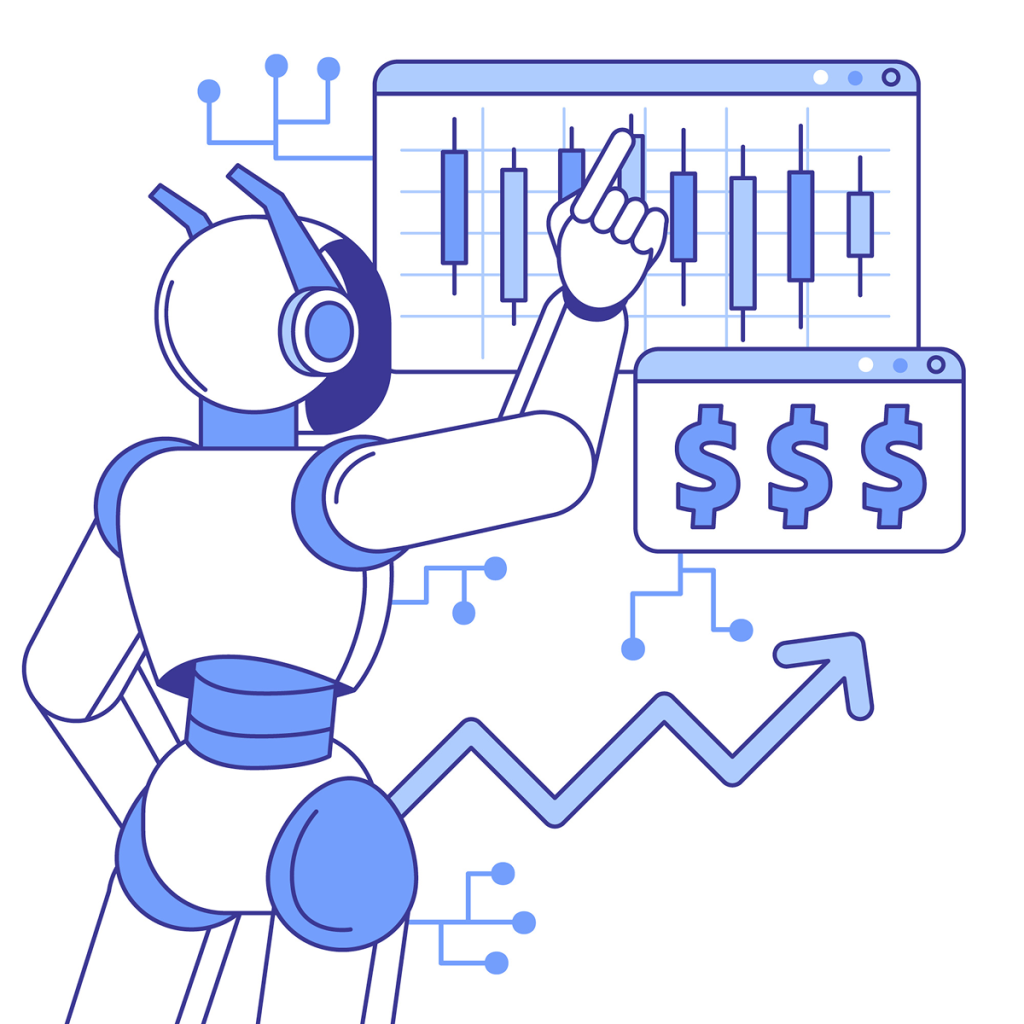Introduction
Automated trading bots have become a central pillar in modern trading, used by retail traders and institutional firms alike. These bots enable traders to execute strategies based on predefined rules, without emotional interference. From high-frequency trading to algorithmic trend following, the world of trading bots is vast, powerful, and full of both opportunity and risk. This ebook explores the mechanics, benefits, drawbacks, and development lifecycle of automated trading bots.
Chapter 1: What Is an Automated Trading Bot?

An automated trading bot is a software program that executes buy and sell orders on behalf of a trader based on a coded strategy. Bots can be built using simple technical indicators or powered by advanced machine learning models.
- Predefined Logic: Bots follow exact rules for entry, exit, position sizing, and risk management.
- Always Active: Bots can monitor and act on trading opportunities 24/5 without rest.
- Data-Driven: Bots use price feeds, news APIs, or fundamental data to drive decisions.
Example: A bot that buys when the 50-period EMA crosses above the 200-period EMA and exits when it crosses back below.
Chapter 2: Benefits of Automated Trading Bots
Automation provides many advantages over manual trading:
- Speed and Efficiency: Bots execute trades faster than humans can react.
- Emotion-Free Trading: No panic, fear, or greed—just execution.
- Backtest Capability: Strategies can be tested on historical data to assess viability.
- Multitasking: Bots can track multiple instruments simultaneously.
- Scalability: Institutional bots manage thousands of trades across markets.
Chapter 3: Risks and Limitations

Despite their strengths, bots are not foolproof:
- Technical Failures: Internet drops, server crashes, or programming bugs can be disastrous.
- Overfitting: Backtests may look great, but real-time markets are more volatile and unpredictable.
- Market Changes: Bots may underperform when market structure or volatility shifts.
- False Security: Traders may trust bots too much and ignore signs of underperformance.
Example: A breakout bot that worked in trending markets might suffer during choppy sideways ranges.
Chapter 4: Types of Automated Trading Bots
Bots vary by strategy, structure, and complexity:
- Trend-Following Bots: Ride momentum in trending markets.
- Mean-Reversion Bots: Bet on price returning to a moving average or range.
- Arbitrage Bots: Exploit price discrepancies between exchanges or instruments.
- High-Frequency Bots (HFT): Execute hundreds or thousands of trades per second.
- News-Based Bots: React to headlines or economic releases via sentiment analysis.
Chapter 5: Platforms and Programming Languages
Depending on your experience and goals, different platforms offer distinct advantages:
- MetaTrader (MQL4/5): Popular for forex and CFD traders.
- TradingView (Pine Script): Ideal for visual, indicator-driven strategies.
- NinjaTrader (C#): For futures and algorithmic backtesting.
- QuantConnect (Python/C#): Cloud-based platform for professionals.
- Custom Python Bots: Full control using APIs (e.g., Binance, Alpaca, Interactive Brokers).
Chapter 6: Building Your First Trading Bot
To create a bot, follow a structured process:
- Define the Strategy: Entry, exit, stop loss, take profit.
- Choose a Platform: Based on data availability, costs, and instrument access.
- Code the Logic: Translate your rules into code or use a no-code builder.
- Backtest: Test on historical data.
- Optimize Parameters: Adjust key values for balance between performance and robustness.
- Forward Test: Use a demo account or small live trades.
- Go Live: Deploy with capital and monitor closely.
Example: A trader builds a simple RSI bot in TradingView, backtests on BTC/USD, and forward-tests for 3 months before allocating real capital.
Chapter 7: Managing and Monitoring Bots
Even after going live, bots require continuous oversight:
- Daily Logs: Check for failed orders, slippage, or connectivity loss.
- Performance Reviews: Compare expected vs. actual trades.
- Adaptive Tweaks: Modify bot parameters when market conditions change.
- Security: Use VPNs, encrypted APIs, and cloud firewalls to prevent tampering.
Chapter 8: Ethics and Regulation
Bot users must be aware of ethical boundaries and legal regulations:
- Front-Running: Illegal manipulation by exploiting trade data.
- Latency Arbitrage: Considered unfair advantage in some jurisdictions.
- Market Manipulation: Spoofing, layering, and wash trading are prohibited.
- Broker Rules: Some brokers disallow scalping or high-frequency bots.
Chapter 9: Case Studies
- Retail Trader Success: A solo developer earned consistent income using a trend-following bot on gold futures.
- Hedge Fund Example: Renaissance Technologies’ Medallion Fund uses ultra-sophisticated quantitative models executed by proprietary bots.
- Bot Failure: In 2012, Knight Capital lost $440M in 45 minutes due to a software error—a cautionary tale for all bot builders.
Conclusion
Automated trading bots empower traders to remove emotion, trade more efficiently, and scale their operations. But they are not a set-it-and-forget-it solution. Success comes from disciplined strategy development, regular performance reviews, and adaptive bot management.
Disclaimer: The information and tools provided by Sky Links Capital are strictly for educational and informational purposes only. They do not constitute financial advice, investment recommendations, or an offer to buy or sell any financial instruments. Users should make independent decisions based on their own research and, where appropriate, seek professional advice.

